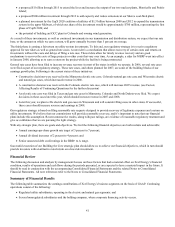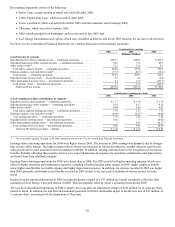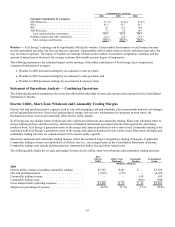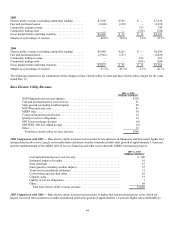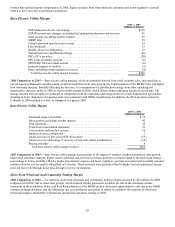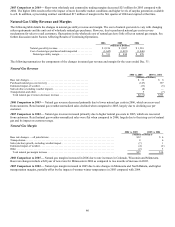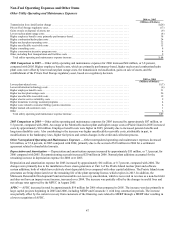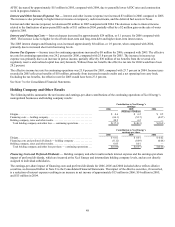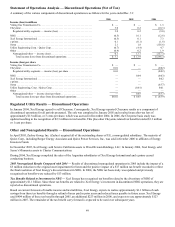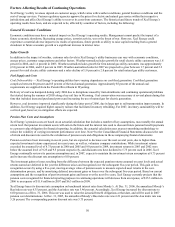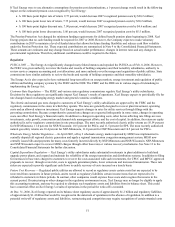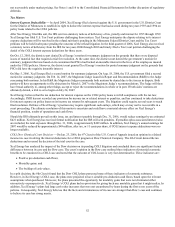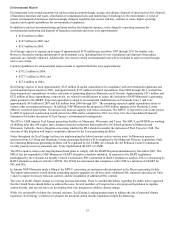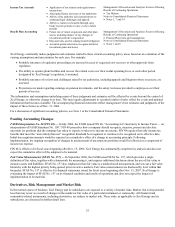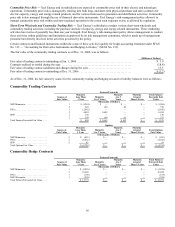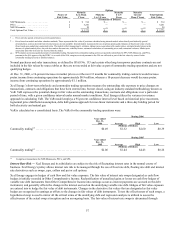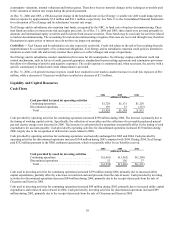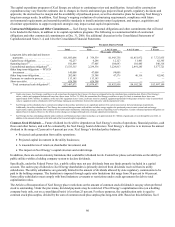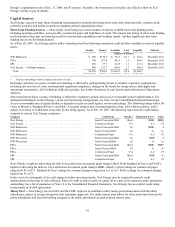Xcel Energy 2006 Annual Report Download - page 61
Download and view the complete annual report
Please find page 61 of the 2006 Xcel Energy annual report below. You can navigate through the pages in the report by either clicking on the pages listed below, or by using the keyword search tool below to find specific information within the annual report.51
If Xcel Energy were to use alternative assumptions for pension cost determinations, a 1-percent change would result in the following
impact on the estimated pension costs recognized by Xcel Energy:
• A 100 basis point higher rate of return, 9.75 percent, would decrease 2007 recognized pension costs by $20.2 million;
• A 100 basis point lower rate of return, 7.75 percent, would increase 2007 recognized pension costs by $20.2 million;
• A 100 basis point higher discount rate, 7.00 percent, would decrease 2007 recognized pension costs by $4.6 million; and
• A 100 basis point lower discount rate, 5.00 percent, would increase 2007 recognized pension costs by $5.5 million.
The Pension Protection Act changed the minimum funding requirements for defined benefit pension plans beginning in 2008. Xcel
Energy projects that no cash funding would be required for 2007 or 2008. However, the Company expects to make voluntary
contributions in 2007 to maintain a level of funded status that allows for future funding flexibility and reduces cash flow volatility
under the Pension Protection Act. These expected contributions are summarized in Note 9 to the Consolidated Financial Statements.
These amounts are estimates and may change based on actual market performance, changes in interest rates and any changes in
governmental regulations. Therefore, additional contributions could be required in the future.
Regulation
PUHCA 2005 — The Energy Act significantly changed many federal statutes and repealed the PUHCA as of Feb. 8, 2006. However,
the FERC was given authority to review the books and records of holding companies and their nonutility subsidiaries, authority to
review service company accounting and cost allocations, and more authority over the merger and acquisition of public utilities. State
commissions have similar authority to review the books and records of holding companies and their nonutility subsidiaries.
The Energy Act is also expected to have substantial long-term effects on energy markets, energy investment and regulation of public
utilities and holding company systems by the FERC and the DOE. The FERC and the DOE are in various stages of rulemaking in
implementing the Energy Act.
Customer Rate Regulation — The FERC and various state regulatory commissions regulate Xcel Energy’s utility subsidiaries.
Decisions by these regulators can significantly impact Xcel Energy’s results of operations. Xcel Energy expects to periodically file for
rate changes based on changing energy market and general economic conditions.
The electric and natural gas rates charged to customers of Xcel Energy’s utility subsidiaries are approved by the FERC and the
regulatory commissions in the states in which they operate. The rates are generally designed to recover plant investment, operating
costs and an allowed return on investment. Xcel Energy requests changes in rates for utility services through filings with the
governing commissions. Because comprehensive general rate changes are requested infrequently in some states, changes in operating
costs can affect Xcel Energy’s financial results. In addition to changes in operating costs, other factors affecting rate filings are new
investments, sales growth, conservation and demand-side management efforts, and the cost of capital. In addition, the return on equity
authorized is set by regulatory commissions in rate proceedings. The most recently authorized electric utility returns are 10.54 percent
for NSP-Minnesota; 11.0 percent for NSP-Wisconsin; 10.5 percent for PSCo; and 11.5 percent for SPS. The most recently authorized
natural gas utility returns are 10.4 percent for NSP-Minnesota, 11.0 percent for NSP-Wisconsin and 10.5 percent for PSCo.
Wholesale Energy Market Regulation — In April 2005, a Day 2 wholesale energy market operated by MISO was implemented to
centrally dispatch all regional electric generation and apply a regional transmission congestion management system. MISO now
centrally issues bills and payments for many costs formerly incurred directly by NSP-Minnesota and NSP-Wisconsin. NSP-Minnesota
and NSP-Wisconsin expect to recover MISO charges through either base rates or various recovery mechanisms. See Note 13 to the
Consolidated Financial Statements for further discussion.
Capital Expenditure Regulation — Xcel Energy’s utility subsidiaries make substantial investments in plant additions to build and
upgrade power plants, and expand and maintain the reliability of the energy transmission and distribution systems. In addition to filing
for increases in base rates charged to customers to recover the costs associated with such investments, the CPUC and MPUC approved
proposals to recover, through a rate rider, costs to upgrade generation plants, lower emissions and increased transmission. These rate
riders are expected to provide significant cash flows to enable recovery of costs incurred on a timely basis.
Future Cost Recovery — Regulated public utilities are allowed to record as regulatory assets certain costs that are expected to be
recovered from customers in future periods, and to record as regulatory liabilities certain income items that are expected to be
refunded to customers in future periods. In contrast, other companies would expense these costs and recognize the income in the
current period. If restructuring or other changes in the regulatory environment occur, Xcel Energy may no longer be eligible to apply
this accounting treatment, and may be required to eliminate such regulatory assets and liabilities from its balance sheet. This could
have a material effect on Xcel Energy’s results of operations in the period the write-off is recorded.
At Dec. 31, 2006, Xcel Energy reported on its balance sheet regulatory assets of approximately $1.2 billion and regulatory liabilities
of approximately $1.4 billion that would be recognized in the statement of operations in the absence of regulation. In addition to a
potential write-off of regulatory assets and liabilities, restructuring and competition may require recognition of certain stranded costs


